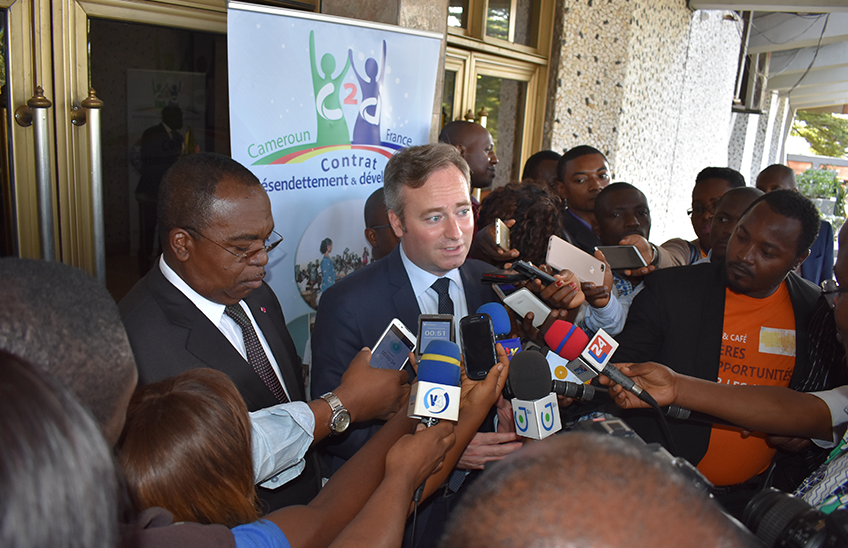The 3rd C2D signed on 30 June 2016 for an amount of nearly CFAF 401 billion, aims to consolidate and perpetuate the achievements of the first two C2Ds. Flexibility has been introduced to allow for rapid disbursement and implementation of projects.
Ø The challenges of the 3rd C2D
The third so-called mature C2D places the challenge of growth and job creation at the centre of poverty reduction actions to contribute to the achievement of our country's development objectives. It is in line with the guidelines given by the two heads of state at their meeting in Yaoundé in July 2015 and is perfectly in line with President Paul Biya's ambition to make Cameroon an emerging country by 2035. In concrete terms, it will be a matter of preserving the achievements and ensuring their sustainability through the transfer to the State of proven mechanisms. It will also be a question of stimulating a dynamic of modernity in the peripheral regions. Finally, particular attention will be paid to populations, particularly young people, and to vulnerable regions of Cameroon.
Ø The specificities of the 3rd C2D
The 3rd C2D is distinguished in two ways:
1. Its amount and duration
The amount of the envelope is nearly CFAF 401 billion. The first two C2Ds received an envelope of 566 billion CFA francs, including 352.7 billion for the first C2D and 214 billion for the second.
This 3rd C2D will extend over eight years of implementation not five years as each of the two previous ones..
2. Its structure and objectives
The 3rd C2D is also different in its structure. It is composed of a "Normal" component with an estimated amount of about 236 billion CFA francs and an additional repayment effort component of about 162 billion CFA francs.
In its "normal" aspect, it will be a question of deepening the rural programmes already under way, which will accelerate the transition to professional agriculture that will generate employment and income. At the same time, the continuation of urban projects in the light of what is already being done in Douala, Yaoundé, Garoua, Bafoussam and Bertoua will help to strengthen several cities in their role as local economic engines, in particular the cities of Maroua and Bamenda.
Taken together, these two components give substance to a vision: that of dynamic countryside connected to modern cities by value chains transforming land products into commercial products. It is this Cameroon of tomorrow, the Cameroon of emerging territories, that the third C2D proposes to support.
In addition to cyclical fluctuations, the national economy is also affected by falling commodity prices, various conflicts and the influx of refugees in the regions bordering Nigeria and the Central African Republic. It is therefore necessary to make the 3rd C2D more flexible compared to the two previous ones and to better calibrate it in order to ensure a rapid and adaptable implementation of its programmes and to support Cameroon effectively in the implementation of its public policies. This is why sectoral budget support, particularly for the social sectors, will also be at the heart of this third C2D.
Pris ensemble, ces deux volets donnent corps à une vision : celle des campagnes dynamiques connectées à des villes modernes par des chaînes de valeurs transformant les produits de la terre en produits commerciaux. C’est ce Cameroun de demain, le Cameroun des territoires émergents, que le troisième C2D se propose d’appuyer.
Par ailleurs, en plus des aléas conjoncturels, l’économie nationale est affectée par la chute des cours des matières premières, des conflits divers et l’afflux des réfugiés dans les régions frontalières avec le Nigéria et la République Centrafricaine. Il convient de ce fait de rendre le 3ème C2D plus flexible par rapport aux deux précédents et de mieux le calibrer afin d’assurer une réalisation rapide et adaptable de ses programmes et d’accompagner le Cameroun de manière efficace dans la mise en œuvre de ses politiques publiques. C’est pourquoi des appuis budgétaires sectoriels, destinés notamment aux secteurs sociaux, seront également au cœur de ce troisième C2D.




